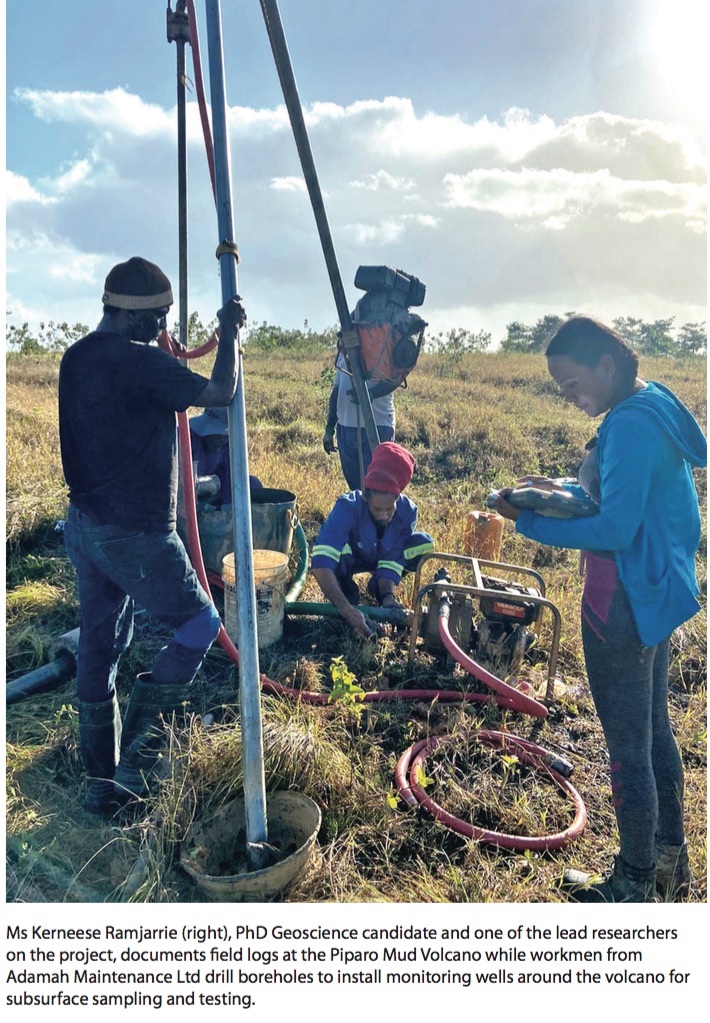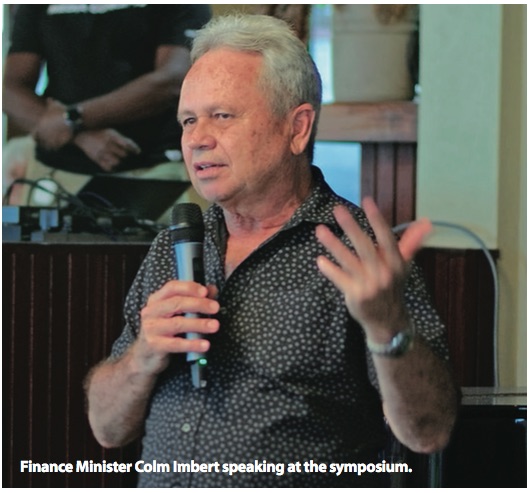
UWI St Augustine held its 2024 Principal’s Research Awards and Conference on November 14, 2024 celebrating outstanding contributions from its top researchers. During the event, Minister of Finance Colm Imbert announced a $10 million investment from the government to fund research at the university, reinforcing their commitment to advancing academic and scientific pursuits.
"We know that the leading countries around the world have demonstrated the value of investing in research and development, which fuels creativity, entrepreneurship, and sustainability," said Campus Principal Professor Rose-Marie Antoine.

"Relevant research propels society forward. The percentage of GDP invested in research and development is key. The most successful countries in the world understand this formula and invest in research and development—South Korea invests as much as 5.21 percent, and China and the USA are the highest spenders in terms of dollars. Similarly, with private companies, there is a direct relationship between the amount spent on RDI and success—Amazon, Apple, Huawei are listed in the top five."
Professor Antoine spoke on the importance of moving beyond traditional sectors: "We need the private sector to recognise and grasp these opportunities for their own development as well. We must move away from the security blanket of an overly emphasised retail sector and move more assertively into investment in research, development, and innovation."

The evening ceremony highlighted UWI’s exceptional researchers, with prestigious awards presented in several categories, including the Principal’s Award for Best Researcher, which was shared by Professor Adesh Ramsubhag from the Department of Life Sciences, Faculty of Science and Technology, and Professor Roger Hosein from the Department of Economics, Faculty of Social Sciences.
Professor Ramsubhag was recognised for his pioneering work in microbiology and biotechnology, which has had transformative impacts on health, agriculture, and environmental sustainability. Professor Hosein was commended for his impactful economic research and contributions to Caribbean development, particularly in the area of Small Island Developing States and disaster resilience.

For more information on the awards, please visit: https://sta.uwi.edu/researchawards/.
To view the awards on line, visit The UWI St Augustine YouTube page at youtube.com/watch?v=luo1Kox8KY0

Professor Adesh Ramsubhag – Department of Life Sciences, Faculty of Science and Technology
Professor Roger Hosein – Department of Economics, Faculty of Social Sciences
Mr Nishan Rampersad – Innovation: “Human Resources Promotion Tracking Solution”, Campus Information Technology Services (CITS)
Professor Shirin Haque
Project: “Women in Science for Hope Foundation”
Department of Physics, Faculty of Science and Technology
Professor Michelle Mycoo – Department of Geomatics Engineering and Land Management, Faculty of Engineering
Dr Ronald Roopnarine – Faculty of Food and Agriculture, Department of Food Production
Professor Jerome De Lisle – School of Education, Faculty of Humanities and Education
Dr Justin Koo – Faculty of Law
Dr Shastri Motilal – Department of Para-clinical Sciences, Faculty of Medical Sciences
Dr Richard Taylor – Department of Chemistry, Faculty of Science and Technology
Dr Riann Singh & Dr Wendell Wallace – Department of Management Studies & Department of Behavioural Sciences, Faculty of Social Sciences
Dr Preeya Mohan – Sir Arthur Lewis Institute of Social and Economic Studies
Graduate Student: Dr Amanda Christine Ramdass
Supervisor: Dr Sephra Rampersad
Thesis: “Biochemical and Genomic Features of Hydrocarbonoclastic Microbes in Trinidad”
PhD in Biochemistry with High Commendation
Department of Life Sciences, Faculty of Science and Technology
Dr Preeya Mohan – Sir Arthur Lewis Institute of Social and Economic Studies
Dr Oshaine Blake – Department of Chemical Engineering, Faculty of Engineering
Dr Ricardo Clarke & Dr Xsitaaz Chadee & Team – Project: “Sustainable Futures: Building Resilient Communities through Health, Infrastructure, and Clean Energy”
Department of Physics, Faculty of Science and Technology
Dr Sandeep B Maharaj & Team – Project: “Connecting Climate Minds”
School of Pharmacy, Faculty of Medical Sciences
Mr Andreas Antonopoulos & Ms Deboleena Paul – Documentary Film Cheenee
Film Programme & Department of Creative and Festival Arts, Faculty of Humanities and Education
Department of Basic Veterinary Sciences
Head of the Department Professor Venkatesan Sundaram & Staff
Faculty of Medical Sciences
Seismic Research Centre
Director Dr Erouscilla Joseph & Staff
Dr Karla Georges & Team
Project: “Regional coordination for disaster preparedness and mitigation activities to relieve animal suffering and safeguard the agricultural and livestock sector”
School of Veterinary Medicine, Faculty of Medical Sciences
Mr Manoj Kollam
Project: “Earthquake forecasting models through the Chaotic Chimp-Based African Vulture Optimisation Algorithm (CCAVOA) combined with CUDA-accelerated Levenberg-Marquardt Backpropagation Neural Networks (LM-BPNN)
Department of Electrical and Computer Engineering, Faculty of Engineering
Khaion Maitland
Secondary School Student, Queens Royal College
Joshua Maraj
Secondary School Student, Fatima College